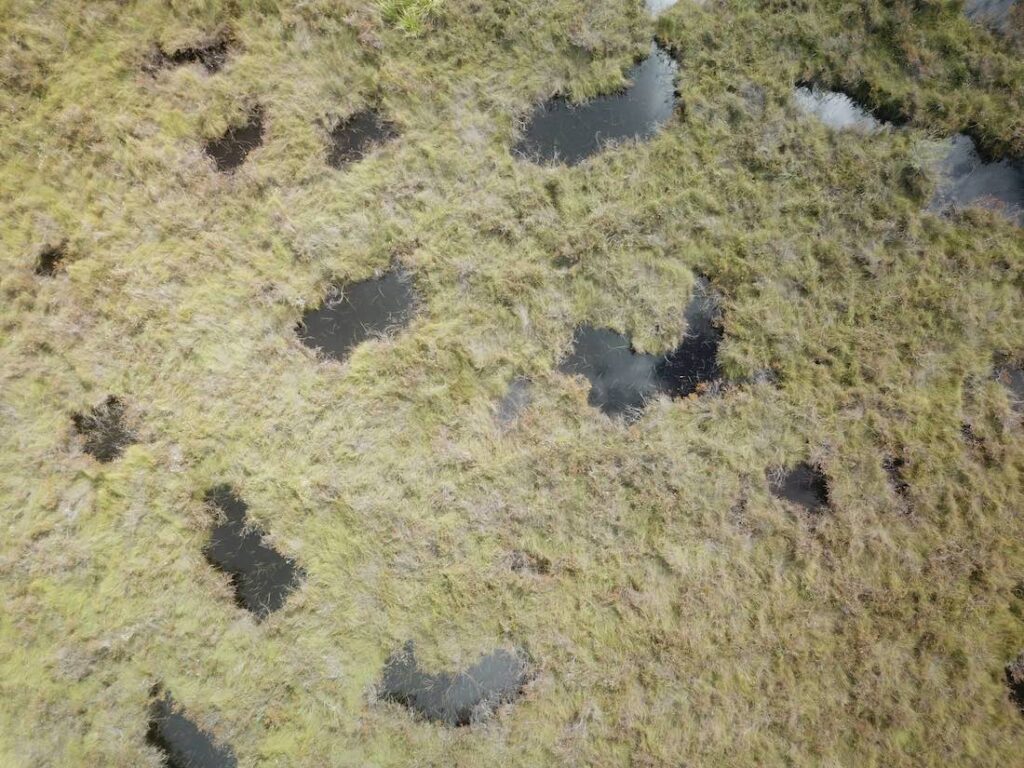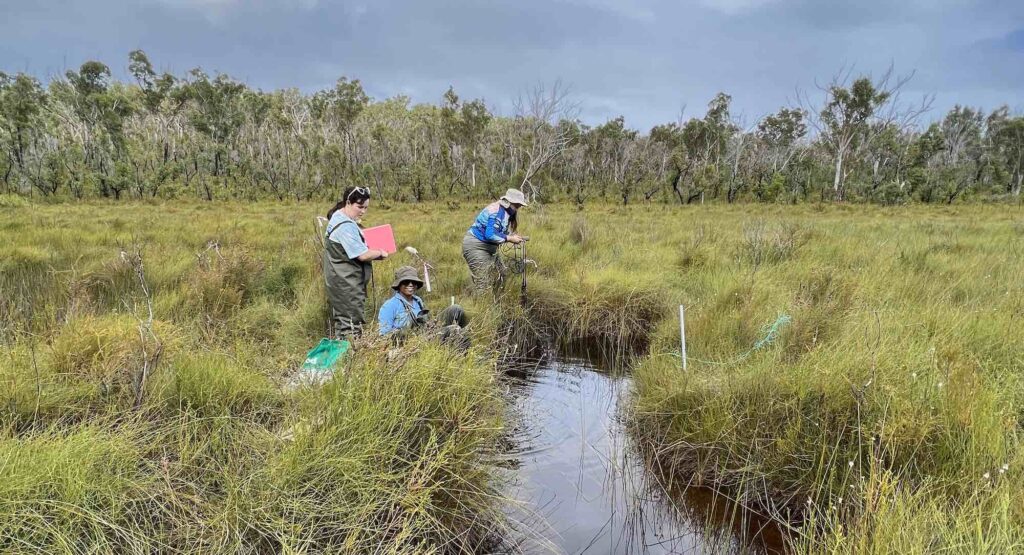An Australian subtropical peatland ecosystem exists that is not only resilient to the frequent bushfires, but actually appears to need fire to survive.
The wire rush peat swamps of the subtropical eastern Australian coast are unique and fragile. They face pressures from urban and agricultural expansion, road construction and climate change. It is important we protect them and the unique ecosystems and vast carbon deposits they harbour.
What are peatlands and why do they matter?
Peat is poorly decomposed plant matter that builds up over millennia in waterlogged environments.
When wet, which is the natural condition, peat can only burn under the most intense fires. As the precursor to coal, however, dried peat is highly flammable.
The peat swamps of K’gari (Fraser Island) in Queensland are dominated by the peat-forming plant known as wire rush, Empodisma minus.
Thousands of hectares of these peat swamps have been identified along the ancient sand deposits of the Australian coast from Queensland to New South Wales.
Subtropical peat swamps
Australian peat swamps hold significant carbon stores in peat deposits up to eight metres or more deep. Layers of charcoal are visible throughout peat cores, showing the regular occurrence of fires over many thousands of years.
Their waters shelter rare and endangered fish (including Oxleyan pygmy perch and honey blue-eye), frogs (such as Cooloola and Wallum sedge frogs) and crayfish (such as the sand yabby Cherax robustus), as well as dragonflies, beetles, midges and bugs.
Subtropical wire rush swamps (in places such as K’gari and Cooloola in Southeast Queensland’s Great Sandy Biosphere Reserve) require fire to suppress other plants – such as dodder, tea trees and banksias – in order to thrive.
Wire rush regrows rapidly after fires from spreading rhizomes (underground roots). It is a perennial, forming dense masses which eventually die at the centre, forming water filled depressions, eventually creating pools many metres wide.

Wire rush roots have dense hairs that absorb water and nutrients like a microfibre sponge. This thick, moist root layer is crucial to the fire resistance and resilience of the wire rush swamps including the aquatic fauna.
As fires get more intense, we are becoming more concerned over the future of these peatlands. The severe 2020 fires on K’Gari resulted in some peat deposits burning down to the sand below.
Peat research in subtropical biosphere reserves
Catherine Yule is a Professor of Ecology at University of the Sunshine Coast and Advisor to the Board of the Noosa Biosphere Reserve Foundation Board. Her research group is studying these peat swamps to learn how deep and dense the peat is, how animals and plants have adapted to the acidic water, how plants, animals and microbes resist and recover from fires, and whether they can survive hotter and more frequent fires.



